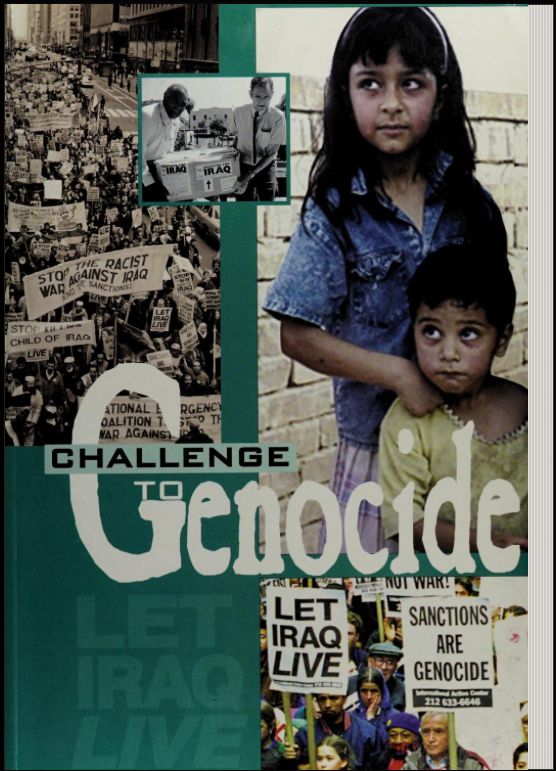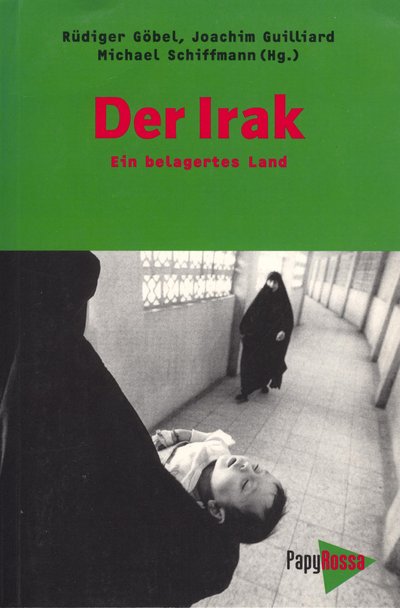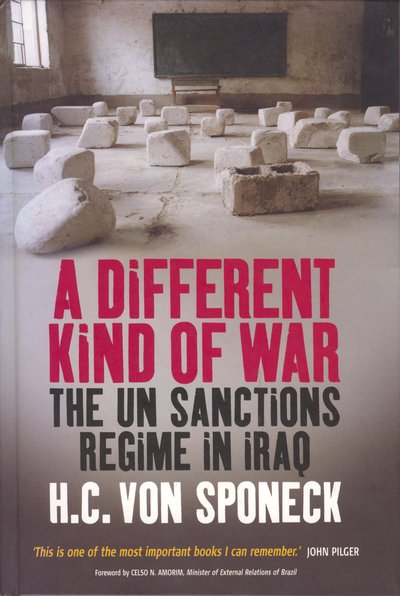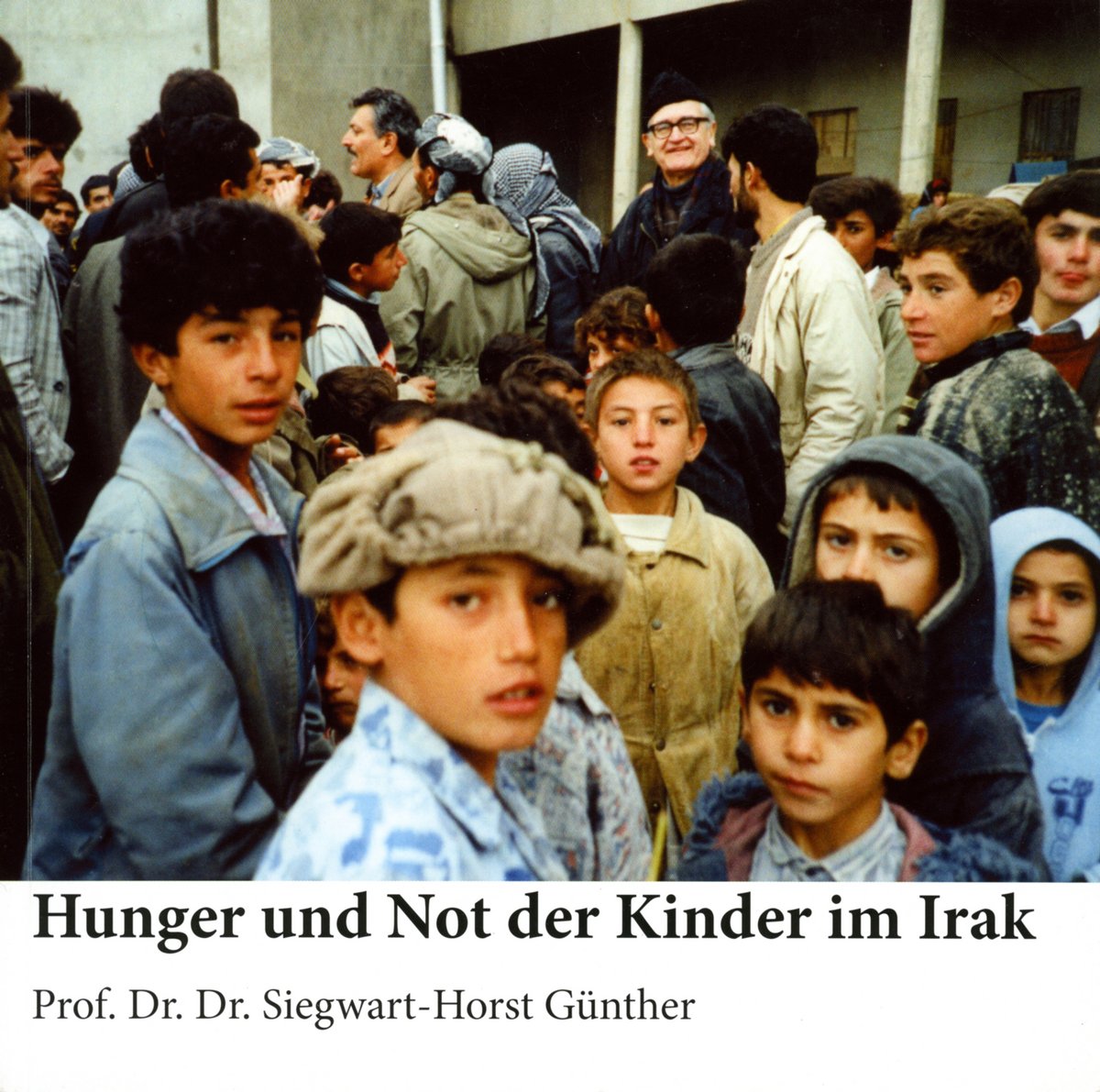The 30 Years War in the Gulf
by Manlio Dinucci, Italy
On January 17, 1991 at 2:30 am (Gulf time), US helicopters penetrated Iraqi territory, destroying two radar stations with Hellfire missiles. Immediately thereafter, Tomahawk cruise missiles and F-117A stealth fighters hit other nerve centers, blinding the capital’s air defense. CNN broadcasted images of the Baghdad sky illuminated by blind-firing anti-aircraft tracers around the world, a “spectacle” that the reporter compared to the festive fireworks of July 4th. Thus, what the Pentagon described as the most destructive military action ever carried out in such a short time with non-nuclear weapons began, it was a model for future wars.
Paradoxically, war breaks out when “peace breaks out” (according to the slogan of the time). After the collapse of the Berlin Wall in 1989, the Warsaw Pact, and the Soviet Union are about to dissolve. “The cold war is over, we have entered a new era that offers great hope,” announced President Bush, but “the Gulf crisis reminds us that there are still autonomous sources of turbulence in the world.” In reality, the “turbulence” was triggered by Washington to take full advantage of the fact that, with the breakup of the Soviet bloc, the United States, as it officially declared, remained “the only State with strength, scope and every dimension - political, economic and military - truly global: there is no substitute for American leadership.”
After supporting Saddam Hussein’s Iraq in Khomeini’s war against Iran in the 1980s, the US pushed Kuwait – which helped Iraq fight Iran – to demand immediate repayment of a billions dollar loan from Baghdad and to exploit beyond measure the oil field that extended under both territories, damaging Iraq. As the tension between the two countries grew, on 25 July 1990, the US ambassador in Baghdad, April Glaspie, assured Saddam Hussein that she “had direct instructions from the President to seek better relations with Iraq” and that “we have no opinion on your border dispute with Kuwait.” A week later, with a colossal political miscalculation Iraq invaded Kuwait, later proposing to withdraw in exchange for certain concessions including access to the Gulf that Great Britain denied when redesigning the Middle East in the 1920s.
The trap sprung. The United States – which had long been preparing for war, observing the deployment of Iraqi forces with military satellites and identifying the targets to be hit – formed an international coalition that sent a large 750,000 manned army to the Gulf under the orders of US General Schwarzkopf. In November 1990 the UN Security Council approved – with 12 votes in favor (including USSR), 2 against (Cuba and Yemen) and the abstention of China - Resolution 678 which authorized the use of “all necessary means” against Iraq.
The Gulf War was the first war in which the Italian Republic participated under US command, in violation of Article 11 of the Italian Constitution. NATO, while not participating officially as such, made its forces and bases available. Immediately after the war, NATO launched, along the new US strategy lines, the “new strategic concept of the Alliance,” which Italy copied with the “new defense model.” Thus, we went from war to war, presenting them as “humanitarian operations for the export of democracy”: Yugoslavia 1999, Afghanistan 2001, Iraq 2003, Libya 2011, Syria 2011, and others.
This was the war that, according to what President Bush declared in 1991, would open “a better future – a new world community brought together by the growing consensus that force cannot be used” and for this reason “the Gulf crisis will go down in history as the crucible of the new world order.” This is testified by the millions of deaths, invalids, orphans, refugees caused by the Gulf War, in addition to one and a half million deaths, including half a million children, caused by the subsequent 12 years of embargo on Iraq and by the long-lasting effects of depleted uranium bullets, plus many others caused by the new war in 2003. The death trail, which started thirty years ago from the first post-Cold War conflict, continues to spread.
The war figures
In the war, called the “Desert Storm,” the US and allied air forces carried out over 110,000 raids in 43 days, with 2,800 aircraft, dropping 250,000 bombs, including cluster bombs releasing over 10 million submunitions.
700-800 tons of depleted uranium shells were used by Air and Land Forces, including one million 30mm fired from airplanes and helicopters, and 14,000 120mm fired from tanks. Thousands of depleted uranium warheads were also used by cruise missiles and rockets.
The US forces are flanked by the British (36,000 men) and French (15.600); Saudi Arabia ranks 67.500, Egypt 35.600, Syria 20.800, the Emirates 14.000, Pakistan 10.000 (plus 2000 Afghan mujahideen), Canada 2.200, Bangladesh 2.000, Italy 1,300, Morocco 1.200, Australia 600, Spain 500, Holland and Belgium 400 each, Greece 200; Turkey, Denmark, Norway, Bulgaria, New Zealand, Sierra Leone, Argentina, Honduras, Senegal, Niger also participated with their military forces.
Since the Second World War onwards, an unprecedented deployment was made up of forces from all continents.
Italy participated in the war with 12 Tornado fighter-bombers, which carried out 226 raids, dropping 566 bombs in missions decided and coordinated by the US command. The US base at Camp Darby supplied the air and land forces in the Gulf from Italy.
The United States, which supplied 70% of the 750,000 men in the coalition, engaged 75% of their tactical aircraft (1950 out of 2600) in the war; 42% of their most modern tanks (2500 out of 6000); 46% of their aircraft carriers (6 out of 13); 37% of their land numbers (280,000 out of 761,000); 46% percent of Marines (90,000 out of 195300).
The cost of the Gulf War in terms of military spending, destruction and economic losses amounted to trillions of dollars. The U.S. military expenditure alone for the second war on Iraq is estimated by the Congressional Budget Office as about 2 trillion dollars. •
Source: Il manifesto of 17 January 2021, translated into English by Tlaxcala
«There was no war. No combat. There was only a deliberate systematic genocide of a defenceless population»
Excerpts from the text by Ramsey Clark “Fire and Ice. The Destruction of Iraq by War and Sanctions»
The fire this time.
(The Gulf-war from 1991)
At 2:30 a.m. on 17 January 1991 the bombs began to fall, and for forty-two days U.S. aircraft attacked Iraq on an average of once every thirty seconds. U.S. technology smashed the cradle of civilization, and George Bush called it liberation.
Without setting foot on Iraqi soil, or engaging Iraqi troops, U.S. aircraft and missiles systematically destroyed life and life-support systems in Iraq over a period of six weeks. There were two thousand air strikes in the first twenty-four hours. More than 90 percent of Iraq’s electrical capacity was bombed out of service in the first few hours. […] Multimillion-dollar missiles targeted power plants up to the last days of the war, to leave the country without power as economic sanctions sapped life from the survivors. […]
By the end of the aerial assault, 110 000 aircraft sorties had dropped 88 500 tons of bombs on Iraq, the equivalent of seven and a half atomic bombs of the size that incinerated Hiroshima. […] Weapons included five-ton fuel-air explosive bombs that create pressures approaching those of low-yield nuclear weapons. Cluster bombs, containing 250 bomblets capable of spewing 500 000 high-velocity, razor-sharp shrapnel fragments over an acre were used against Basra and on congested highways. Napalm bombs were used against people and to ignite oil-well fires.
Within days there was no running water in Iraq. For many weeks, people in Baghdad – without television, radio, or newspaper to warn them – were getting their drinking water from the Tigris in buckets. The Iraqi News Agency and Baghdad Broadcasting Station lost six wireless broadcast stations, twelve television stations, and five radio stations. Iraqa television system was put out of service in the first few days of the war. […]
Lack of communications frustrated attempts to conduct most organised activity, including caring for the sick and injured. The destruction of transportation links compounded the problem. In a country built around two great rivers, 139 automobile and railway bridges were either damaged or destroyed, including 26 in the Basra province alone. […]
Iraq’s eight major multipurpose dams were repeatedly hit and heavily damaged. This simultaneously wrecked flood control, municipal and industrial water supply, irrigation, and hydroelectric power. Four of Iraq’s seven major water-pumping stations were destroyed. Bombs and missiles hit thirty-one municipal water and sewage facilities. Sewage spilled into the Tigris and out into the streets of Baghdad, adding water-borne disease to the list of killers. […]
Iraq’s agriculture and food-processing storage and distribution system was attacked directly and systematically. […] all of the irrigation systems serving them [irrigated lands] – including storage dams, barrages, pumping stations, and drainage projects – were attacked. […] At least three food warehouses in the Baghdad Province were hit, seven were struck in Asra province, and all of Iraq’s General Company of Foodstuffs warehouses in Al-Qadissiya province were destroyed. […] Iraq’s factory in Abu Ghraib to produce baby milk powder, unique in the region, was attacked on January 20, 21, and 22. […] In Al-Taji, […] the country’s biggest frozen-meat storage and distribution center was destroyed. […]
Farm herds were decimated. […] Ninety percent of the country’s poultry production was destroyed. […]
Grain silos across the entire country were hit methodically, and hundreds of farms and farm buildings were attacked. […]
In June 1992, more than a year after Iraq was driven from Kuwait and with sanctions still in place, the United States burned grain and wheat fields with incendiary bombs near Mosul in northern Iraq.
U.S. bombing hit twenty-eight civilian hospitals and fifty-two community health centers. Zubair Hospital in Basra province totally collapsed from bombing. At the Ins Rashid Mental Hospital, southeast of Baghdad, ceilings collapsed onto patients’ beds. At Ulwiyya Maternity Hospital, shrapnel and broken glass hit babies and mothers. […]
Allied bombs damaged 676 schools; thirty-eight were totally destroyed. Eight of those hit were parts of universities. Nor were mosques, other religious buildings, or historic sites immune from U.S. attacks […].
Bombers hit civilian government office buildings in Baghdad […].
Many manufacturing plants were hit. Seven textile factories sustained damage, as did five engineering plants, three construction facilities, four cars assembly plants, three chlorine plants, a major ammonia export facility, and sixteen chemical, petrochemical, and phosphate plants. A major hydrodermic syringe facility in Hilla was destroyed by laser-guided rockets. […]
Iraq’s Oil industry was a priority target. […] Rail stations and yards, transportation hubs, bus stations, and car lots were systematically attacked everywhere.
As the infrastructure and life-support systems were being bombed, Iraqi civilians were killed by the thousands. Attacks on life-support systems assured that many more thousands would perish, even though they might be far from the line of fire. […]
The Pentagon claimed 1 500 tanks were destroyed by F-111s alone, confirmed by video camera. Nearly all these planes employed laser-guided depleted-uranium missiles, leaving 900 tons of radioactive waste […]. The rate of tumors, cancers, leukemia, and other fatal growths has increased alarmingly in the last few years in Iraq. […]
At the end of the bombing campaign, tens of thousands of Iraqi soldiers were simply murdered. The European Parliament heard this description in April 1991:
Hundreds, possibly thousands of Iraqi soldiers began walking towards the U.S. position unarmed, with their arms raised in an attempt to surrender. However, the orders for this unit were not to take any prisoners. […] The commander of the unit began the firing […]. Quite simply, it was a slaughter. […]
With an arrogance to match its violence, the U.S. requested that the UN Security Council investigate war crimes committed by Iraq against U.S. soldiers and Kuwaiti citizens. […]
There was no war. No combat. There was only a deliberate systematic genocide of a defenceless population while barely setting foot on Iraqi soil. When Dr. Martin Luther King Jr. said in 1967, «the greatest purveyor of violence on earth is my own government,» he could not have dreamed in his worst nightmare what the U.S. did to Iraq.
Source: Ramsey Clark et al. Challenge to Genocide. Let Iraq live. New York. International Action Center 1998. (p. 3-32)
William Ramsey Clark (*18.12.1927) served as Assistant Attorney General for the Department of Justice under President Kennedy, became Deputy Attorney General in 1965 (administration Johnson) and served as Attorney General from 1967-1969.
After working for the Ministry of Justice he became a human rights lawyer. His involvement included peace, disarmament, human rights, civil rights, voting rights, health, education and others. In 1991 he founded the International Action Center. Under Clark’s leadership, a tribunal of 21 judges from a wide range of ethnicities and religions was formed in February 1992 to indict the United States on 19 counts of committing crimes against humanity in the Gulf War against Iraq.
In 2008, he received the United Nations Human Rights Award.
Sanctions – a different kind of wars
cc. “The fate of a nation could have been different – more humane and consistent with internationally defined standards of life – had the protagonists opted for dialogue and honest intentions. The United Nations could have emerged as a winner by helping to solve a crisis. International law would have been confirmed as the universally acceptable basis for international relations. The world would have been less confused and a more secure place today.”
So reads the introduction to the book published in 2005 by Hans-C. Sponeck “A Different Kind of War: The UN Sanctions Regime in Iraq”. Hans-C. Sponeck was UN Humanitarian Coordinator for Iraq and Assistant UN Secretary-General responsible for the “Oil for Food” programme in Iraq from 1998 to 2000. In 2000, he resigned from his post in protest against the sanctions imposed by the UN on Iraq.
The spine of the book (German edition) reads: “The United Nations has failed Iraq. Its sanctions regime has contributed to the current catastrophic situation in the country, disregarding basic human rights such as those to food, health or education for years. The ‘Oil for Food’ programme was supposed to secure humanitarian aid for the Iraqi people during the period of the economic embargo from 1996 to the end of 2003. Instead, structural problems such as budget constraints and programme delays, a heavy-handed apparatus and, above all, the policies of some permanent members of the UN Security Council have caused the rapid impoverishment of the Iraqi people and the death of many innocent people.”
In 2007, the Verlag Zeit-Fragen published the book by Siegwart-Horst Günther “Hunger und Not der Kinder im Irak” (Hunger and hardship of children in Iraq) (ISBN 978-3-909234-03-5). The book describes the consequences of the use of uranium weapons in the Iraq war and shows many pictures of this, especially of the children suffering from the consequences of the war in Iraq. On the cover of the book, Professor Günther looks into the camera with glasses and headgear.





